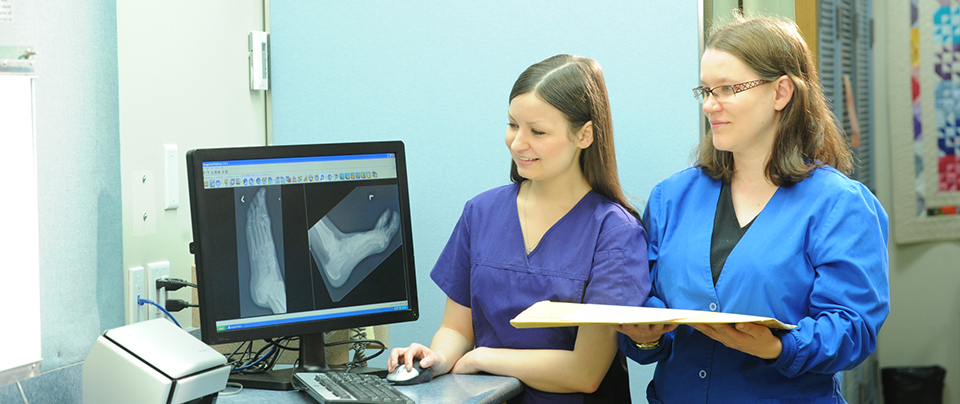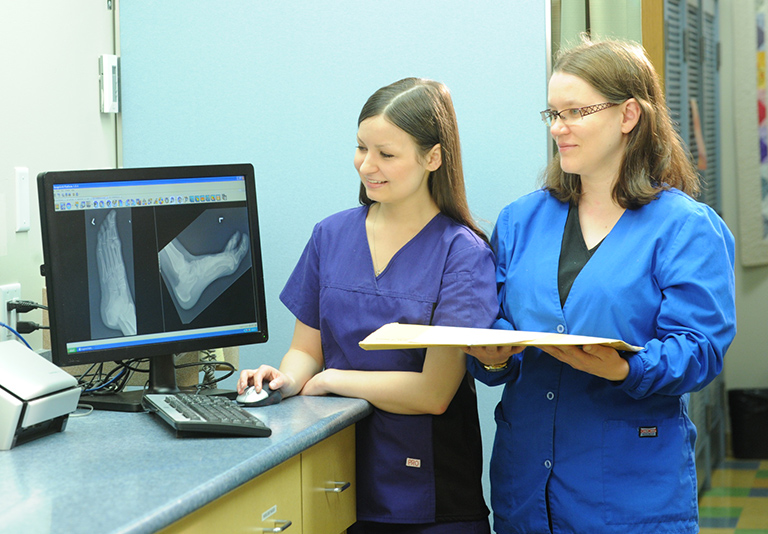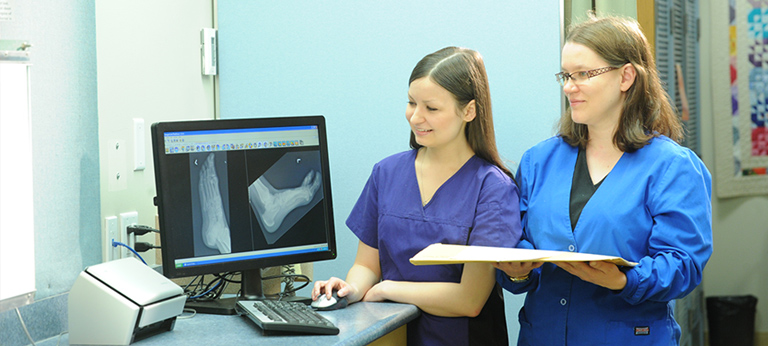X-rays are particles of electromagnetic radiation used to show what is going on inside your body. Prairie Skies Medical Imaging utilizes digital radiology (DR) technology in their clinics. Digital radiography is a form of X-ray imaging, where digital X-ray sensors are used instead of traditional photographic film. Instead of X-ray film, digital radiography uses a digital image capture device. This gives advantage of immediate image preview and availability. Also less radiation can be used to produce an image of similar contrast to conventional radiography. With digital techniques, one no longer needs to use chemical processing, which is much better for the environment. In addition, the technologist or radiologist has the ability to apply special image processing techniques that enhance overall display of the image.
One of the most commonly performed diagnostic X-ray examinations is the chest X-ray. Approximately half of all X-rays obtained in medical clinics are chest X-rays—usually done to evaluate the lungs, heart and chest wall. Pneumonia, heart failure, emphysema, lung cancer and other medical conditions can be examined using a chest X-ray.
Other x ray examinations commonly performed at our clinics are spine, upper and lower extremities, sinuses, abdomen and ribs. We also perform arthrography, but only at our Parliament Avenue location.
Benefits
- X-ray examinations are easy to access; they are quick to perform; reports are turned around quickly
Risks
- X-rays are a type of electromagnetic radiation, are invisible and create no sensation when they pass through the body. The chest X-ray is one of the lowest radiation-exposure medical examinations performed today. The radiation dose is even further lowered by using digital x-ray techniques.
- Special care is taken during X-ray examinations to ensure maximum safety for the patient by paying attention to correct X-ray beam energies. Shielding the body with a lead apron helps reduce unnecessary exposure to radiation. Women should always inform their doctor or X-ray technologist if there is any possibility that they are pregnant, and women will be asked if they could be pregnant before their X-ray exam.
- The effective radiation dose from this procedure is about 0.1 mSv, which is approximately the same as the average person receives from background radiation in the environment over 10 days.
Preparing for the procedure
We accept walk-in X-ray appointments. No preparation necessary.




